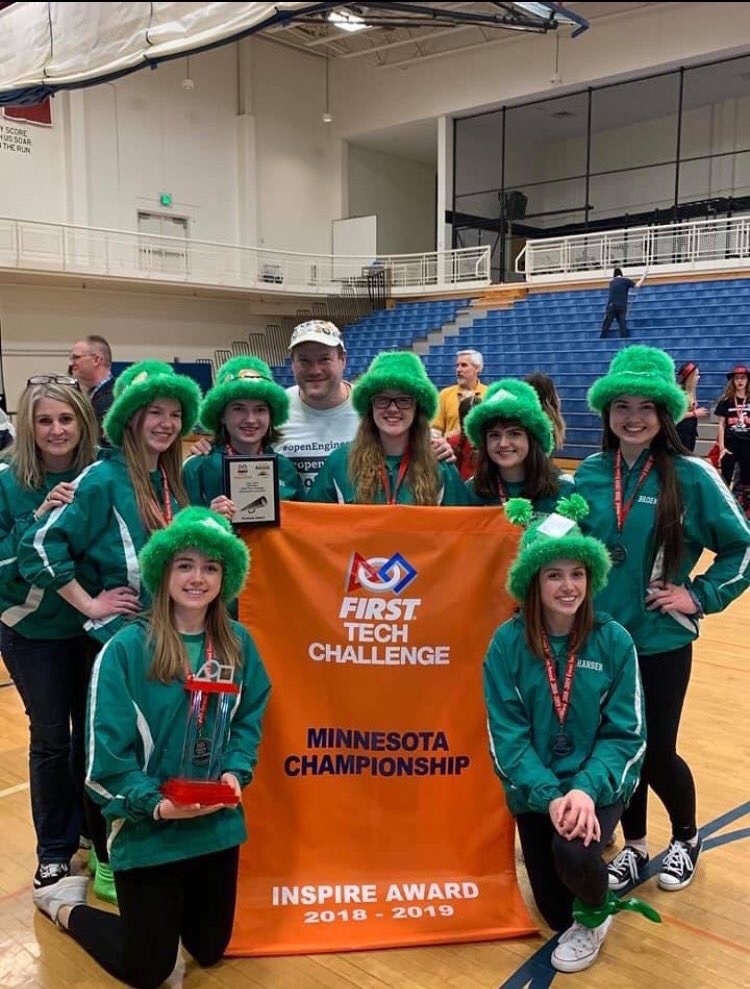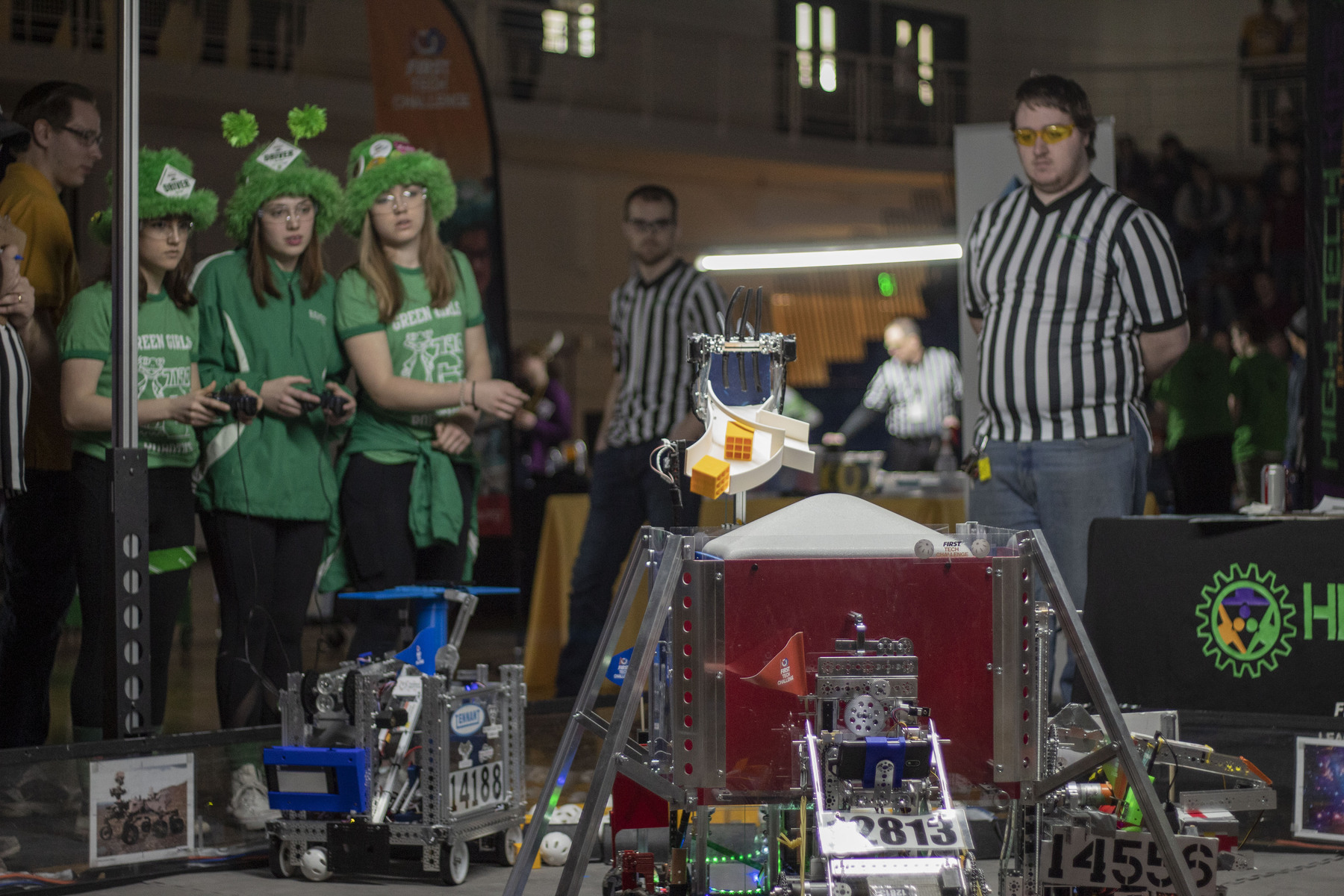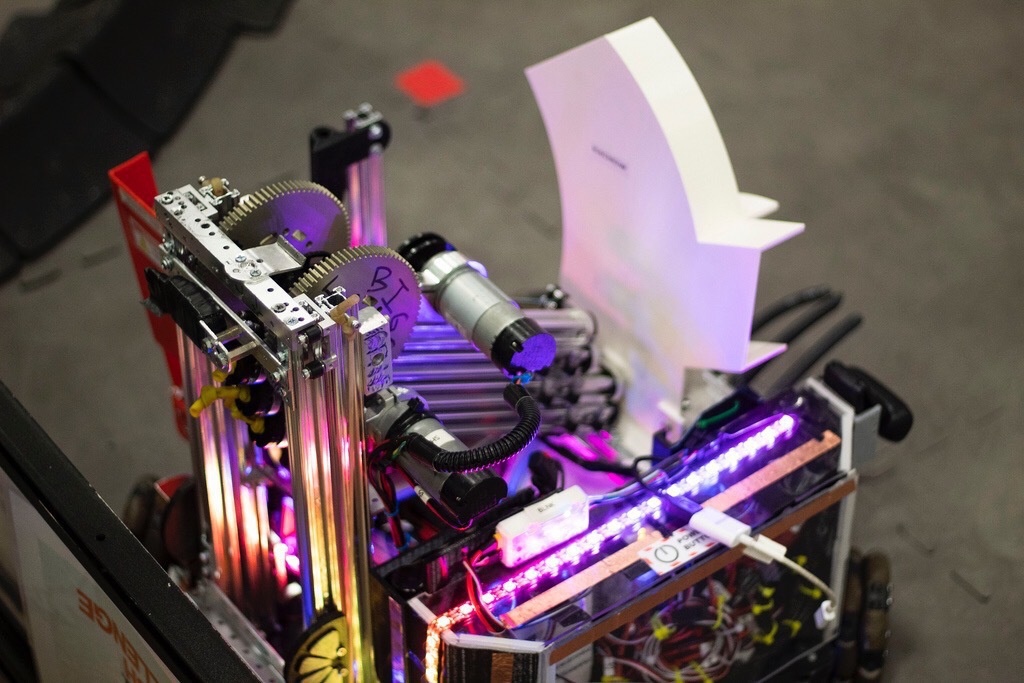Today I realized that, at twenty years old, I have spent nearly half of my life in FIRST (For Inspiration and Recognition of Science and Technology) Robotics .
Every Monday, Friday, and Sunday of my high school career you could find me sitting in a shop writing code and building robots. For at least nine hours a week I collaborated with my team Green Girls Robotics to get ready for competitions and outreach events. That’s a lot of hours to commit to an after school program, but I counter with the fact that FIRST robotics is not your usual after school activity.
(Our team at the conclusion of the MN State Championship, 2019)

FIRST robotics is often called the “Sport of the mind,” and can be thought of as a hybrid of speech team, chess club, and football. Three activities that you would never think to mix. FIRST combines the critical thinking and strategy of a chess match, the presenting and communication skills of a speech team, and the teamwork and competition of a football game into one annual challenge. Every year, each age group receives a new game challenge in which they must build and program a robot to score points as well as document their journey in an engineering notebook. Teams are put to the test at competitions where their robots compete head-to-head to earn the most points and the students are challenged to present why their designs and community outreach are the most impactful.
(Driving the robot during a match at the MN State Championship 2019)

If I could give parents at SPS one piece of unsolicited advice, it would be to get their kids involved in FIRST robotics. I started programming robots in third grade on a team at my elementary school. By the time I graduated high school I knew how to program in three different languages, had built nine robots, and had presented to crowds of over 500 people at a time. All of these experiences came to me through robotics and ultimately put me at an advantage over my classmates.
For two years I was the lead programmer on my team and the driver of the robot for competitions. During that time I learned how to utilize sensors, plan pre-programmed routes for the robot, use vision-recognition, communicate across sub-teams, manage our code database, and document so that others could understand my thought processes. My favorite use of a sensor had to be when I programmed our lift system to stop after it reached its maximum and minimum heights. All the driver had to do was press a button and it would extend automatically. You can see my favorite pre-programmed route which shows how I utilized vision recognition to find a yellow block and demonstrates my favorite use of a sensor here.
(Our 2019 competition season robot, Sirius, lining up for a practice match)

As a female in STEM I can confidently say that participating in FIRST robotics shaped my decision to pursue a career in engineering. In third grade I found that I loved building and designing lego robots. In high school I discovered my passion for programming when I coded the camera on our competition robot to recognize the difference between blocks and balls. Without the comfortable welcoming environment of my FIRST Robotics team to explore my interests, I don’t think I would’ve pursued STEM as a major in college.
If students do not decide to choose a STEM-related career or even continue their participation in FIRST there is no harm done. By exposing your children to FIRST and STEM at a young age you give them the opportunity to explore their interests and start a tool belt of skills that will be helpful in any major or career field. To learn more about getting your children involved in FIRST you can visit FIRST’s programs page and the Minnesota partner High Tech Kids’ programs page.
No matter your skill level with technology, adults can get involved in FIRST as well by volunteering at local competitions or even becoming a mentor. Being a FIRST volunteer or mentor is one of the most rewarding experiences, because you get the opportunity to teach students about the STEM industry and guide them through their season. These connections give kids the opportunity to learn about STEM jobs before deciding on their major or career path. Since I graduated high school, I have volunteered at robotics competitions as a referee and a robot inspector. It’s an amazing feeling when you can help students get their robots up and running after months of the team’s work. Volunteers are the lifeblood of this program and without them, robotics competitions wouldn’t exist. That’s why I urge you to learn more about volunteering or mentoring for this amazing program by visiting FIRST’s volunteer page and learning more about volunteering in Minnesota by looking at High Tech Kids’ volunteer information.